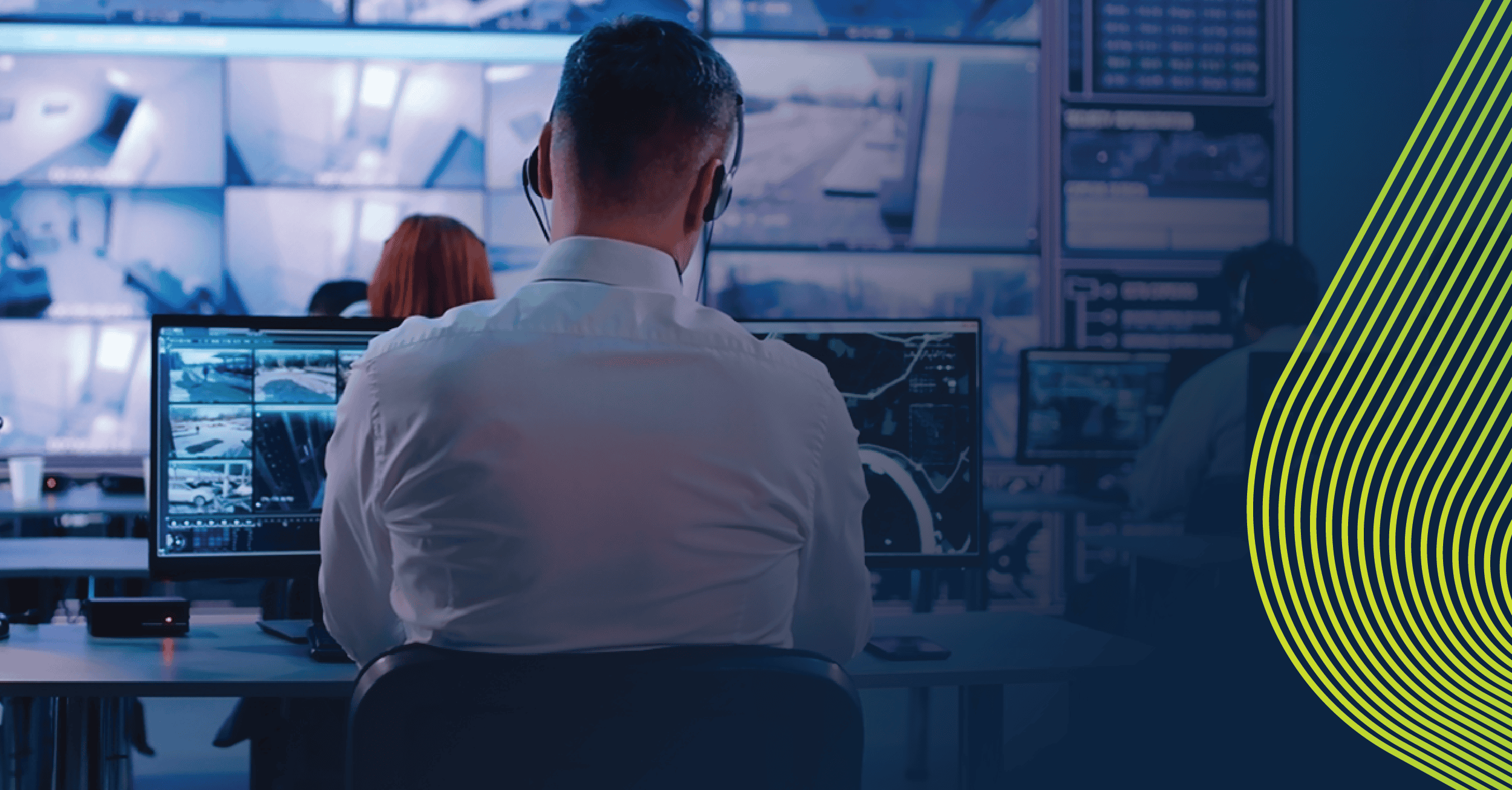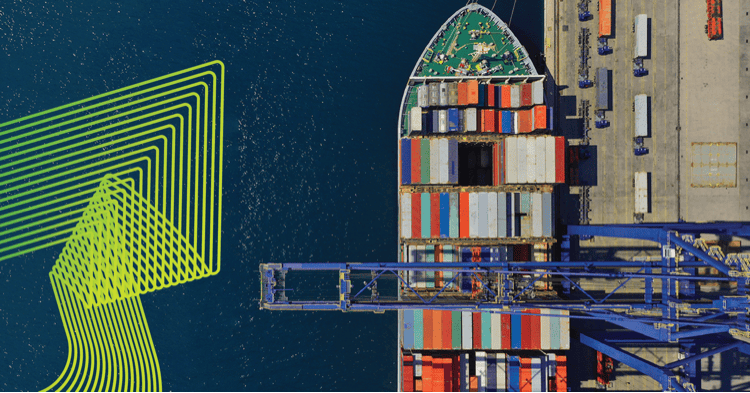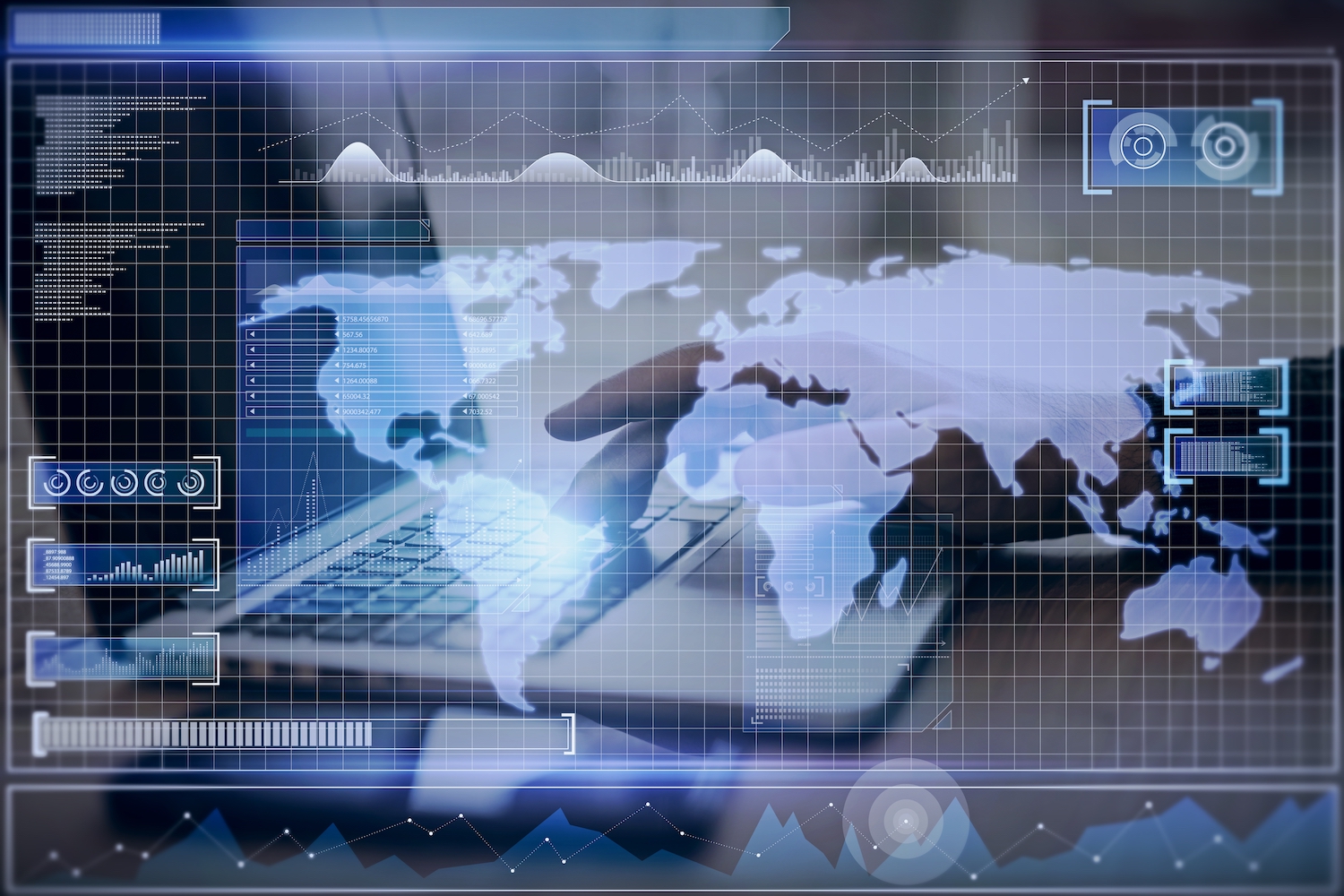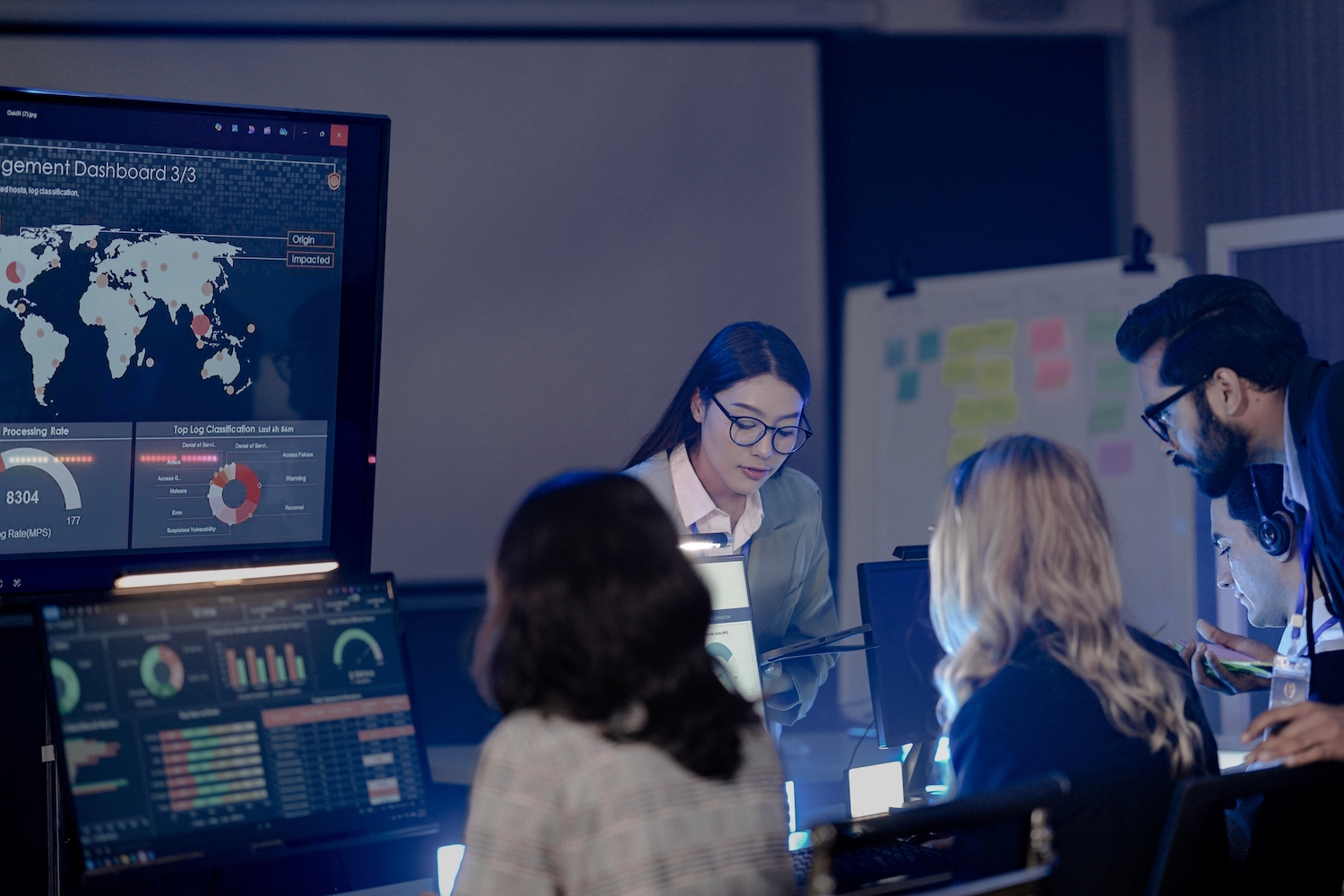When it comes to operational security, the procedures of the past are no longer sufficient. Even if an organization is staffed with the most efficient security team in the world, it is impossible for them to manually monitor all of the raw data being created and shared in today’s always-on, always-connected world. Yet staying abreast of this intelligence is essential, as it is the key to understanding real-time geopolitical instability, economic shifts, breaking cyber threats, and current social unrest.
Instead of relying on human expertise alone to gather raw data from various sources, many organizations are also leveraging the power of technology. This powerful partnership results in advanced intelligence gathering – empowering leaders and security teams to move beyond reactive responses and traditional methods and adopt the cutting-edge tactics that today’s complex geopolitical climate demands. When humans and machines collaborate, organizations enjoy smarter, more continuous and optimized techniques that make it possible to anticipate rather than react. This shift from collecting information to extracting insight is a true evolution of the security industry.
Why Intelligence Gathering Must Evolve
It isn’t easy to update processes or procedures. Most organizations have set ways of doing things that feel comfortable. However, just because something has been done the one way doesn’t mean it’s the most effective or efficient way. Poor or outdated intelligence processes need to be addressed because they can lead to:
- Reputational damage
- Missed business opportunities
- Security vulnerabilities
- Financial losses
- Supply chain disruptions
The issues above are ones to be avoided at all costs. Security teams come to work each day just to make sure these are problems that do not arise under their watch. However, if new tools and strategies are not put in place, the odds that the team will be forced to manage one or more of these issues is high. Even the most skilled teams need to take advantage of modern innovations as people alone simply cannot stay on top of all of the valuable information circulating online.
The amount of data and content being created and shared is growing higher and higher each day. This information is incredibly valuable; it can help teams identify the potential threats most likely to impact their organization. However, without the aid of a technology tool to help parse through the vast amount of intel, organizations will struggle to find out what matters. Turning the raw intelligence into usable insight takes time – and teams that are focused on manual monitoring simply won’t have that luxury.
Organizations need to be working with the aid of advanced technologies that help automate intelligence gathering, so teams can shift from racing to predicting and preparing. These tools can handle reviewing all of the content being shared, flagging key words and locations and serving that information up to security teams to determine what is truly relevant to their organization and what is not. This intelligence allows them to make more informed decisions, and do a better and more efficient job of keeping people, assets, operations, and reputations safe.
Core Techniques in Advanced Intelligence Gathering
There are five pillars of modern intelligence gathering.
#1: Open-Source Intelligence (OSINT)
OSINT is publicly available information and while it is impossible to quantify the exact amount of data coming from open sources, it is undoubtedly a lot! And growing each day. This is why human analysts alone can’t manage the monitoring of OSINT. Modern tools are needed to automate the collection of data from sources like news outlets, forums, social media, and academic databases. Advanced platforms can do more than simply cull and sort, but also offer incredibly valuable functions such as the ability to analyze trends and sentiment to help identify early signals.
OSINT is one of the many key areas that the broader intelligence community relies upon to inform decisions across sectors, including public safety, defense, and crisis management.
#2: Artificial Intelligence (AI) and Machine Learning (ML)
These technologies are critical in helping organizations manage large data sets as they can do what humans can’t with incredible speed and efficiency. Additional tools natural language processing (NLP) can work in tandem with AI and ML to extract key information from unstructured data. These innovations can be programmed to search for specific types of data and then even work to reveal patterns across sources. Understanding changes in trends can be super helpful in tipping teams off to possible encroaching dangers.
This kind of digital processing complements human intelligence by automating initial detection and freeing up human experts to add context, validation, and actionability to raw findings.
#3: Human-Augmented Analysis
Even with all of the amazing modern-day technology solutions, human analysts are still vital. Analysts offer expertise to help validate and interpret what AI uncovers – making insights truly actionable! The fusion of people and machines is augmented analytics and it is a true game-changer for the security industry. Combining the speed and efficiency of technology with the real-world knowledge and contextual understanding of analysts is changing the way organizations manage security challenges.
In cases where threats emerge from intercepted digital communications, organizations may incorporate signals intelligence as a way to monitor and decode potentially hostile or malicious activities in real time.
#4: Specialized and Dark Web Intelligence
Tools analyzing the dark web often include imagery intelligence and geospatial intelligence functions to visually verify claims or identities, such as leaked credentials, territorial conflict locations, or surveillance footage.
#5: Cross-Referencing and Fusion
Technology offers amazing benefits, but these technologies are not without flaws. Therefore it is imperative for teams to stay involved to cross reference and validate key events. Organizations also need to ensure they are using multiple data sources to form a complete, more reliable picture. The security industry refers to this process as all-source intelligence.
This methodology has applications far beyond private sector use; it is critical to national security efforts, where the stakes include public safety, economic protection, and defense integrity.
Why It Matters: Business Impact
Advanced intelligence gathering offers a plethora of real-world benefits. When security teams are supported by the right technology platforms, their organization will be able to make impressive progress in its risk and threat avoidance and will see success in:
1. Early identification of risks and threats
If risks and threats are identified before they become actual problems, operations can continue without pause, employees remain safe, and organizations are able to maintain their projected bottom line. This is the very definition of actionable intelligence, and it allows companies to shift from reacting to preparing.
2. Better decision-making for executives
Information is power. Leaders who have a solid understanding of current geopolitical conditions and how those activities directly affect their operations will be able to make the most informed decisions. These insights often mirror those used by a national intelligence agency tasked with keeping citizens and infrastructure secure. It is also imperative that leaders understand what the most likely national security threats are – and advanced technologies can produce this intelligence with minimal effort.
3. Resource allocation based on anticipated issues
Understanding where issues are likely to occur helps organizations decide where to deploy personnel and funds. These same principles are used in tactical intelligence to support front-line decision-making and guide response strategies in fluid situations. Whether for business or military contexts, the ability to allocate resources based on real-time information is critical.
4. Greater supply chain resilience
If security teams can identify where issues are throughout the world, they can flag problems before supply chains have to be disrupted. For example, by collecting intelligence across shipping channels and geopolitical hotspots, teams can identify and work around possible chokepoints. In government contexts, this form of intelligence collection may also support broader national intelligence efforts focused on protecting economic interests.
5. Stronger business continuity and crisis response plans
Leveraging innovative risk and threat technology platforms will help organizations build stronger continuity and response plans. This mirrors how governments build national security strategy frameworks that incorporate foreign intelligence and military intelligence to ensure operational readiness.
In corporate use, teams might rely on electronic intelligence and communications intelligence to monitor global developments, or integrate human source intelligence to provide culturally specific insight that enhances data models. These inputs allow organizations to interpret risk from multiple angles – similar to how government agencies conduct intelligence operations across domains.
Additionally, businesses are starting to model their intelligence priorities on those of government and defense sectors. This includes formalizing processes for intelligence activities and ensuring alignment with broader security related activities, such as crisis communications, physical security protocols, and brand protection. Some even choose to partner with private security services that specialize in advanced intelligence capabilities, often staffed with former intelligence operatives who bring deep knowledge of counterterrorism, political unrest, and the global monitoring of weapons of mass destruction.
How to Start Implementing It
Teams looking to put these techniques into place need to begin by identifying the right technology platform for their organization. This platform should focus on intelligence gathering and alleviate that task from the analysts’ plates, empowering them to focus on strategy development and application. These analysts and data scientists will also have more flexibility to now focus on preemptive measures, studying data and applying their real-world knowledge to uncover both positive opportunities and possible risks that had been overlooked previously.
Deploying a new intelligence platform is not a one and done task. Organizations need to invest in ongoing monitoring and refinement of that tool. Technology is always improving and teams need to be ready to invest in learning about these changes and applying the relevant benefits to their unique business needs. Integration into workflows like risk management, strategy, and operations is key. Teams need to have the time and funds to make this happen and then be committed to continuous refinement.
Platforms can offer extreme benefits, but organizations shouldn’t think these tools can operate fully autonomously. Teams need to be intimately involved and spend time vetting and verifying to ensure that false news or misinformation isn’t being interpreted as fact.
When organizations invest in the right tools and make it a priority to implement, monitor, and refine tactics and procedures, they will realize massive improvements in their intelligence gathering – arming leaders with information to make better decisions that benefit the entire business, from top to bottom.
Intelligence as a Strategic Advantage
Advanced intelligence gathering is no longer optional. It needs to be an essential part of every organization’s strategy for navigating the uncertain world we live in today. Advanced intelligence gathering techniques will give organizations a true edge by helping them anticipate rather than simply reacting.
Combining the right technology tools with human insight is the best way to foster improved decision-making. Organizations must assess their current capabilities and explore ways to modernize. One tool that may be of use to organizations looking to enhance their intelligence gathering capabilities is Seerist. Seerist is an augmented analytics platform designed to support this kind of intelligence work, helping organizations make faster and more informed decisions. Specifically, Seerist can assist organizations in advancing AI and ML modeling to enhance global event detection, risk assessment, and operational decision-making.
While adopting new approaches to intelligence gathering may feel foreign or uncertain, it is a proven strategic advantage that should be adopted. In fact, leveraging this intelligence may be the only way for organizations to successfully anticipate and respond to threats as they evolve, minimizing the impact on profitability and preventing operational disruption. If your organization isn’t prioritizing advanced intelligence gathering yet, this is the time to begin.






